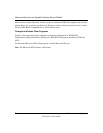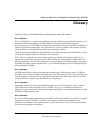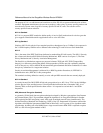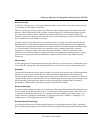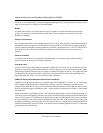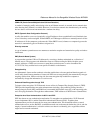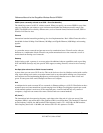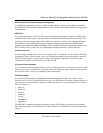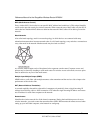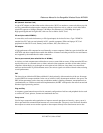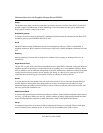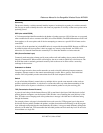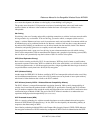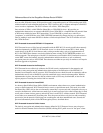
Reference Manual for the RangeMax Wireless Router WPN824
Glossary
7
202-10072-01, March 2005
IEEE (Institute of Electrical and Electronics Engineers)
A membership organization (www.ieee.org) that includes engineers, scientists and students in electronics
and allied fields. It has more than 300,000 members and is involved with setting standards for computers and
communications.
IEEE 802.11
A set of specifications for LANs from The Institute of Electrical and Electronics Engineers (IEEE). Most
wired networks conform to 802.3, the specification for CSMA/CD based Ethernet networks or 802.5, the
specification for token ring networks. 802.11 defines the standard for wireless LANs encompassing three
incompatible (non-interoperable) technologies: Frequency Hopping Spread Spectrum (FHSS), Direct
Sequence Spread Spectrum (DSSS) and Infrared. WECA’s (Wireless Ethernet Compatibility Alliance – now
Wi-Fi Alliance) focus is on 802.11b, an 11 Mbps high-rate DSSS standard for wireless networks.
Infrastructure mode
A client setting providing connectivity to an access point (AP). As compared to Ad-Hoc mode, whereby PCs
communicate directly with each other, clients set in Infrastructure Mode all pass data through a central AP.
The AP not only mediates wireless network traffic in the immediate neighborhood, but also provides
communication with the wired network. See Ad-Hoc and AP.
IP (Internet Protocol) address
A 32-bit number that identifies each sender or receiver of information that is sent across the Internet. An IP
address has two parts: an identifier of a particular network on the Internet and an identifier of the particular
device (which can be a server or a workstation) within that network.
ISO Network Model
A network model developed by the International Standards Organization (ISO) that consists of seven
different levels, or layers. By standardizing these layers, and the interfaces in between, different portions of
a given protocol can be modified or changed as technologies advance or systems requirements are altered.
The seven layers are:
•Physical
• Data Link
•Network
• Transport
• Session
• Presentation
• Application
The IEEE 802.11 Standard encompasses the physical layer (PHY) and the lower portion of the data link
layer. The lower portion of the data link layer is often referred to as the Medium Access Controller (MAC)
sublayer.




